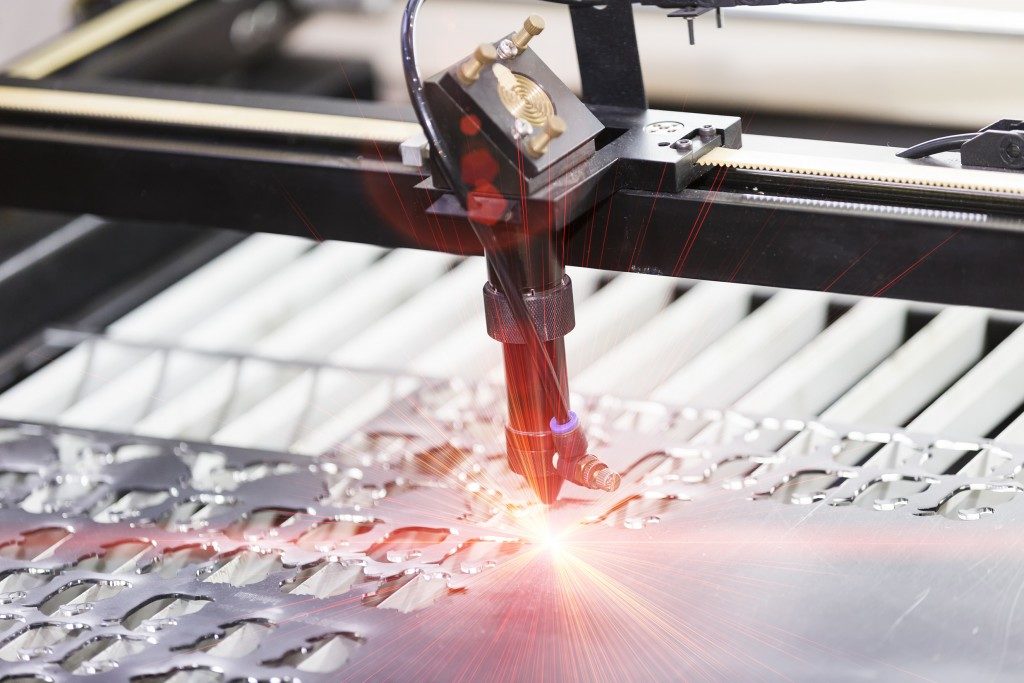A laser is used as a cutting tool for a variety of industries, such as manufacturing, automotive production, and steel fabrication, specifically for laser marking stainless steel components.
Laser cutting is a relatively new technology that uses a laser beam to cut a specific material to a specific size based on the specifications of a project. A high-powered beam is directed through the laser optics onto the material to be cut, but this is all done through CNC (computer numerical control), a program designed to operate machinery that would ensure a high level of accuracy.
With the cutting guided by extremely accurate computer-controlled parameters, the laser cut can be as minuscule as 0.001 inches, and with a high degree of dimensional accuracy at about plus/minus 0.0005 inches. This level of accuracy is paramount in producing the jagged teeth that are needed in cutting tools, among others.
How Laser Works
Everything that the laser beam touches is instantly vaporized, melted or burned, leaving no jagged edges that would otherwise require polishing. This minimizes production time, as the output is of high-quality finish. Because of this, more people are finding uses for laser cutting, such as school administrators, small business owners, and hobbyists.
The Laser Cutting Technology

This technology is available in two formats—the gantry system and the galvanometer.
Gantry. The slower of the two systems, gantry works by positioning the laser perpendicular to the material to be cut. The machine will direct its laser beam over the material’s surface. Gantry is used primarily for producing prototypes.
Galvanometer. The use of mirrored angles for repositioning the laser beam is how the galvanometer system works. The speed at which this system accomplishes a cut is astounding—as fast as a hundred feet per minute, therefore, this is the preferred system by fabricators for production work.
Advantages of Using Laser Cutting Technology
Laser cutting has certain advantages over other cutting methods.
Precision. The computer element in laser cutting is designed to be precise; therefore, the resulting work is clean and completely follows the specifications set for it.
Energy efficient. Because of speed and precision, laser technology only uses energy required as the laser cutting is underway, especially when cutting steel and aluminum sheets.
Clean cut. The precise way lasers cut cannot be replicated by other cutting methods, such as routers. Furthermore, the laser beam is not prone to wear and tear while it is cutting.
Unlimited cutting configurations. If it can be programmed into a computer, laser cutting technology can cut it. This effectively eliminates the need for additional tooling.
Materials Laser Can Cut
Thin metals: stainless steel, spring steel
Plastics: ABS, high-density polyethylene (prone to melting if cutting takes a long time), acrylic (Plexiglas), mylar, nylon, styrene
Foam: Depron foam (the type used for remote-controlled airplanes); EPM
Other Materials: Cloth (suede, cotton, felt, leather, hemp); magnetic sheets; wood (balsa, poplar, cherry, holly, birch, MDF)
Whatever the cutting job may be, there is always the laser cutting technology option, which is reliable and accurate. If your project requires cutting of several materials, look for a reputable company that offers laser cutting tools and services near you.

